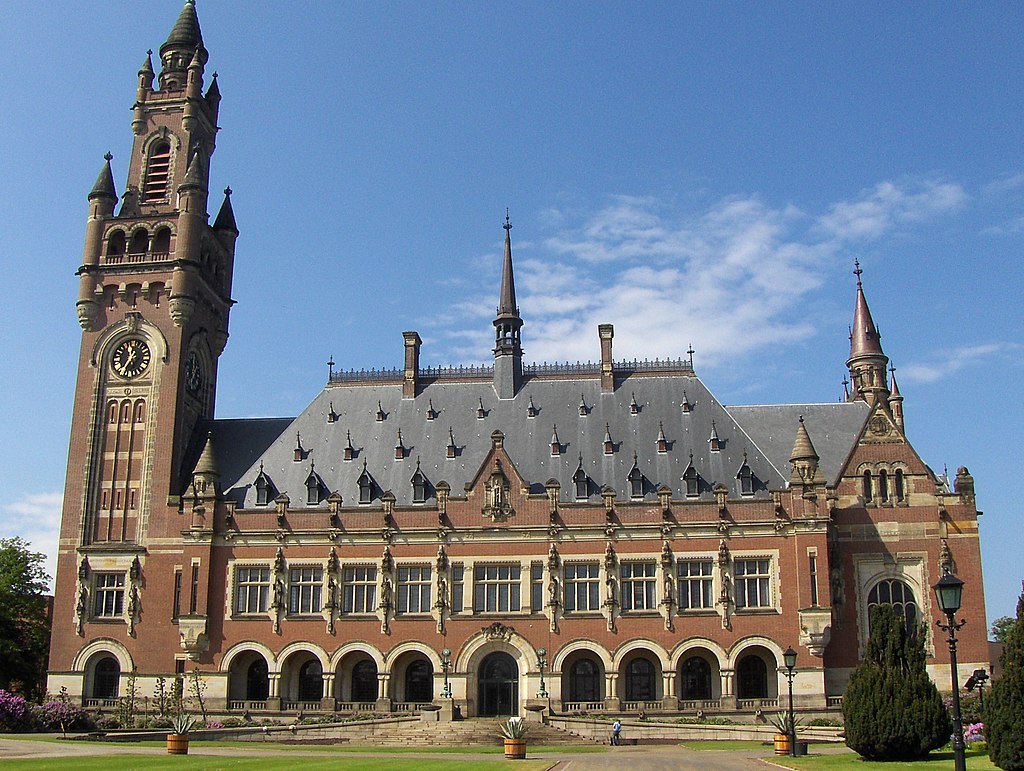Clearing Up Misconceptions on Cross-Border Migrant Smugglers: An Interview with Gabriella Sanchez
Since President Donald Trump took office on January 20th, unauthorized immigration and the U.S.-Mexico border have topped the national security agenda (at least until the chaos over General Flynn’s calls with the Russian ambassador knocked them off the front page). In his first days in office, Trump signed executive orders to build a full-length border wall and hire thousands of additional border patrol agents.
Published by The Lawfare Institute
in Cooperation With

Since President Donald Trump took office on January 20th, unauthorized immigration and the U.S.-Mexico border have topped the national security agenda (at least until the chaos over General Flynn’s calls with the Russian ambassador knocked them off the front page). In his first days in office, Trump signed executive orders to build a full-length border wall and hire thousands of additional border patrol agents. And last week, he signed another executive order vowing to dismantle transnational criminal operations and singling out the “smuggling of human beings … as enriching and empowering these organizations to the detriment of the American people.”
To add a bit of context to these latest policy pushes and public security declarations, I spoke with Gabriella Sanchez, Assistant Professor of Security Studies and Associate Director for Research at the University of Texas at El Paso’s National Security Studies Institute, about the migrant smuggling dynamics along the border. A migrant herself—born and raised in Mexico before coming to the United States as a teenager—Sanchez has worked with and researched smugglers, first as a criminal investigator in Maricopa County, Arizona and then later as a researcher along the U.S.-Mexico border.
As the following interview reflects, migrant smuggling across the U.S.-Mexico border is a far more complex and decentralized business than it is often portrayed. It goes well beyond a group of “bad hombres” in cahoots with organized crime—to start, it also has its fair share of bad mujeres—and as such, any effective policy solutions will also need to be complex.
Lawfare: To begin, who are the smugglers moving migrants across the U.S.-Mexico border?

Gabriella Sanchez: Migrant smugglers don’t have a specific profile. They are ordinary people; men as well as women of all ages. Over the course of my work, I have interviewed people as young as 18 and as old as 65. And the ones that I first met in Maricopa County, Arizona were not members of organized crime, they didn’t have a prior history of violence, and there was no evidence that they were engaging in any type of intimidation or coercion.
Not all smugglers perform the same tasks, and most only perform one activity. For example, a smuggler may only do one of the following activities: coordinate the journey, recruit potential clients, feed these migrants, drive them, host them during their travel, act as a lookout, or collect fees. It’s very uncommon to find people who do two or more tasks.
Smuggling is also a very gendered market. Women—and men who are paying for part of their journey with smuggling work—perform tasks that are seen as lesser value, such taking care of people, feeding them, or housing them. Men, on the other hand, perform the more visible and the more physical tasks, such as driving, navigating groups over long distances, or protecting migrants from gangs, criminal organizations, police, or the military.
How are these smugglers organized?
This may sound counterintuitive, but smuggling is actually a scattered activity. It is also a referral-based business. People check with friends and family members for advice; they look at smugglers’ references, and seek out people who have crossed the border. Smuggling is based on social proximity and migrants do their due diligence.
Smugglers are also often friends, family members, classmates, or know one another from church. They don’t always work together and instead provide labor or perform tasks on an as-needed basis. In business terms we are primarily talking about independent contractors. However, because smugglers’ tasks are criminalized, smugglers often protect themselves by only working with people that they trust and traveling with migrants that they know or that are pre-screened. I have documented cases of smugglers who will not transport migrants that they have not interviewed or met in person.
Smugglers’ services also depend on the migrants’ gender, health status, age, and especially their financial resources. In other words, as a migrant, you get what you pay for. Some smugglers may provide top-of-the-line services: transporting migrants in newer vehicles with legitimate documents and moving them through regular checkpoints that are under the watch of corrupt law enforcement. And then there are more vulnerable migrants with very limited resources that are more likely to rely on smugglers with unknown reputations or who may only provide partial services. These migrants with less social or financial capital are more likely to experience violence.
There is growing indication that people are also increasingly relying on basic technology like cellphones (apps and maps) and social media to move along migrant routes without smugglers.
How would a border wall affect migrant smugglers? Would it stop them?
No. If you ask any border patrol agent if the fence is going to work, they are going to tell you: the fence is not supposed to stop people, it is supposed to delay border crossers and give agents time to detect and arrest them.
Smugglers know that a border wall won’t be built overnight and they are going to start looking for new routes. A wall will actually increase the demand for smuggling services, increase prices, and increase the amount of resources that migrants and their families need for a successful and safe crossing. It will also increase the vulnerability of migrants who don’t have these resources.
It will also impose greater challenges on law enforcement and border patrol agents, who often live in these border communities and have family on both sides of the border. Plus, they’ll be the ones who will have to respond to the increased number of kidnappings and extortion that will come from pushing these activities further underground.
We hear a lot about drug trafficking convergence (where drug traffickers have taken over the migrant smuggling business), have you seen this to be the case in your work?
The interactions between the drug trafficking and migrant smuggling businesses are varied and there is very limited data on the issue.
There is definitely an extent to which people from both groups connect, interact, and hang out. Migrants know the value of working for drug trafficking groups and they often volunteer to do so because of the potential monetary returns. Some people use their participation in drug trafficking activities to further finance their journeys or as a mechanism to move toward their desired destination. Other researchers have documented cases of drug trafficking organizations kidnapping and forcing migrants (at times with brutal violence) to work for them.
The most-documented interaction is organized criminal groups’ imposition of a tax or piso on smugglers who cross through specific geographic routes. Smugglers then pass this fee onto migrants. But we have to be careful. To say that one market has taken over another is an over-generalization and does not take into account migrants’ varied experiences during their journeys, nor the decisions that they make under stress or coercion.
Another big issue is that smugglers could move terrorists into the United States. Do you see this as a possibility?
There is no empirical evidence connecting migrant smugglers and terrorist organizations. In fact, traveling with a smuggler wouldn’t be a very safe or reliable option for someone who wants to carry out a terrorist activity in a specific country. Smugglers operate underground but can be detected. They also can’t guarantee a specific time of arrival, that you’ll cross in the first attempt, or that you’ll make it through a specific route. We’ve seen that most people who carry out terrorist activities travel through legal channels because they are safer, more reliable, and faster.
Are there any other facts or misconceptions that you hear a lot that would be important to clear up?
Yes, that all forms of smuggling are violent. Violence does exist, and we have very well documented cases of kidnapping, extortion, and assault carried out by smugglers. Yet it is more common to find personal conflict rather than full-fledged acts of violence during the journey, especially between smugglers and their clients.
Traveling with a smuggler is not your friends' backpacking adventure. People get mad, people get sick, people get injured, people get homesick, and people regret their decisions. We also often hear that smugglers abandon their clients and we tend to forget that there are other migrants who could challenge or counter a smugglers’ practices. In my work, I have also heard situations in which smugglers attempt to help their clients but other travelers in the group do not want to stay and help someone. The decisions that migrants and smugglers take during these trips are complex, reflect their survival instincts, and may haunt them long after their trip comes to an end.
This interview has been edited for clarity.





